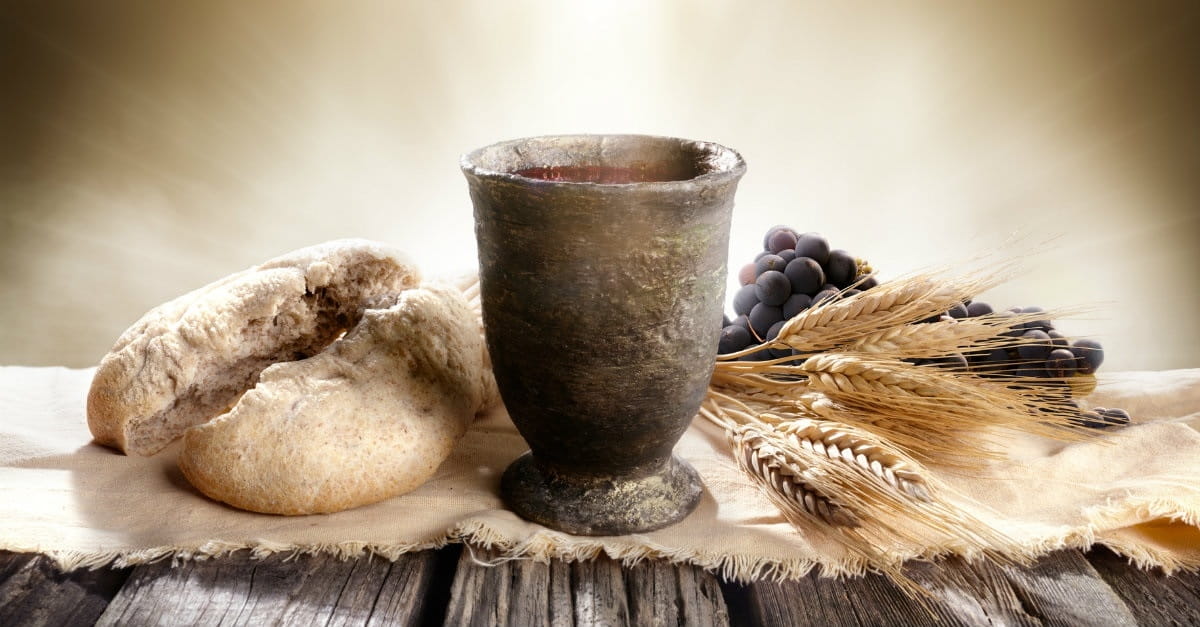Why communion what does it do?

The Lord’s Supper was instituted by the command of Christ and by His example as well. On the night before His death, Christ gathered with His disciples to eat the Passover meal (see Matt 26:26–29; Mark 14:22–25; Luke 22:17–20).
Since the Supper was celebrated in connection with the Passover, we may assume the bread was unleavened. Jesus gave thanks (eucharisteo, from which the idea of Eucharist comes) for the meal.
That the institution of the Lord’s Supper was connected with the Passover meal is clear in the phrase “after the Supper” (1 Cor 11:25), meaning after the Passover meal. It is practically certain that 1 Corinthians was written before the completion of the Gospels, which means that Paul’s account is the earliest record we have of the institution of the Lord’s Supper.
The Names of the Supper. The Supper is identified six different ways in the NT: (1) Lord’s Supper (1 Cor 11:20);
(2) Lord’s Table (1 Cor 10:21);
(3) Breaking of Bread (Acts 2:42; 20:7);
(4) Communion (1 Cor 10:16);
(5) Eucharist (1 Cor 11:24); and
(6) Love Feast (some manuscript readings of 2 Pet 2:13; Jude 12).

The Meaning of the Supper. The Supper’s initial focus was table fellowship around a common meal. As the bread and wine were taken, the Lord’s presence was to be recalled in the words “in remembrance of me” (1 Cor 11:24). To recall means to transport an action that is buried in the past in such a way that its original potency and vitality are not lost but are carried over into the present. It is a remembrance of the life and death of the Lord.
Just as the Passover was the means that dynamically allowed Jews to relive the past experience of their forebears in the land of Egypt, the Lord’s Supper takes believers back to the scenes of the Lord’s redemption, leading them again to receive the blessings of the Lord’s passion.
The bread symbolizes - The sinless life that qualified Him to be a perfect sacrifice for sin. It represents His body in which He actually bore our sin on the cross (1 Pet 2:24). His shed blood is represented by the wine. Believers are to look upon these elements as taking them back to the scenes of the Lord’s death.
The believers’ participation in the Supper represents their response to the Lord’s love that bore the cross.
The Supper is a basic announcing of the gospel (1 Cor 11:26), a sermon by the entire church in silence. The Supper tends to quicken the anticipation for the second coming (see Matt 26:29). It thus points beyond itself to a future hope in the kingdom of God.
As believers participate in the Supper, they are reminded of the oneness within the body of Christ and of the fellowship that is shared among fellow believers. The observance is one that is so simple a believing child can partake with a sense of understanding. Yet it also contains so many doctrinal ramifications that even the most mature believer will not fully comprehend its meaning.
The Practice of the Supper. The church is commanded to continue the ordinance of the Lord’s Supper (1 Cor 11:24). The Supper provides a needed emphasis on the death and resurrection of the Lord that established the new covenant (1 Cor 11:25; see Jer 31:31–34).
There are no specific guidelines about how and when the Supper should be observed. Yet the implications from the NT teach us that the Supper should be regular, frequent (1 Cor 11:20), and normally on the first day of the week (see Acts 20:7).
Conclusion. Past, present, and future are thus gathered up in one sacred and joyful festival of the Lord’s Supper in apostolic practice and teaching. Indeed, in this ordinance, the whole of what Christianity means is expressed. One Lord, incarnate, atoning, and triumphant is the sum and substance of the observance.
Here is seen a dramatic interrelationship between human relationships and relationship with God. The essence of the experience is fellowship and worship, eating together, while at the same time remembering the death of the Lord Jesus Christ on our behalf.
Dockery, D. S. (Ed.). (1992). Holman Bible Handbook (p. 691). Nashville, TN: Holman Bible Publishers.

